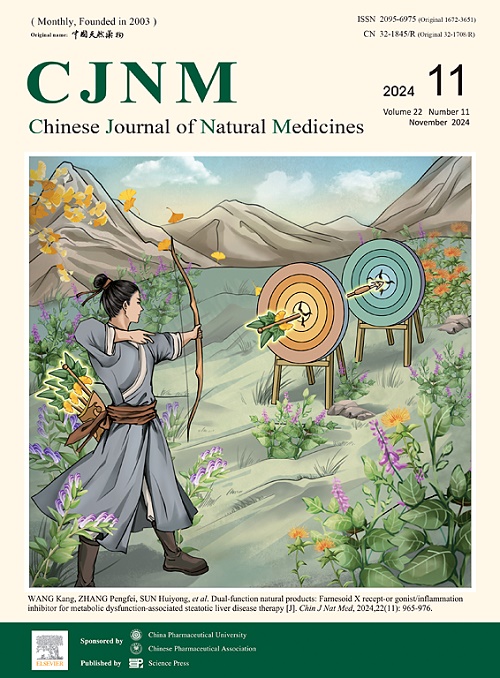Ustusolate E and 11α-Hydroxy-Ustusolate E induce apoptosis in cancer cell lines by regulating the PI3K/AKT/mTOR and p-53 pathways
IF 4
2区 医学
Q1 INTEGRATIVE & COMPLEMENTARY MEDICINE
引用次数: 0
Abstract
Cancer represents a significant disease that profoundly impacts human health and longevity. Projections indicate a 47% increase in the global cancer burden by 2040 compared to 2020, accompanied by a further rise in the associated economic burden. Consequently, there is an urgent need to discover and develop new alternative drugs to mitigate the global impact of cancer. Natural products (NPs) play a crucial role in the identification and development of anticancer therapeutics. This study identified ustusolate E (UE) and its analog 11α-hydroxy-ustusolate E (HUE) from strain Aspergillus calidoustus TJ403-EL05, and examined their antitumor activities and mechanisms of action. The findings demonstrate that both compounds significantly inhibited the proliferation and colony formation of AGS (human gastric cancer cells) and 786-O (human renal clear cell carcinoma cells), induced irreversible DNA damage, blocked the cell cycle at the G2/M phase, and further induced apoptosis in tumor cells. To the best of the authors’ knowledge, this is the first report on the anticancer effects of UE and HUE and their underlying mechanisms. The present study suggests that HUE and UE could serve as lead compounds for the development of novel anticancer drugs.
ususolate E和11α-羟基- ususolate E通过调控PI3K/AKT/mTOR和p-53通路诱导癌细胞凋亡
癌症是一种严重影响人类健康和寿命的重大疾病。预测表明,到2040年,全球癌症负担将比2020年增加47%,同时相关的经济负担将进一步增加。因此,迫切需要发现和开发新的替代药物来减轻癌症对全球的影响。天然产物(NPs)在抗癌药物的鉴定和开发中起着至关重要的作用。本研究从calidoustus Aspergillus TJ403-EL05菌株中鉴定出ususolate E (UE)及其类似物11α-羟基ususolate E (HUE),并对其抗肿瘤活性和作用机制进行了研究。结果表明,两种化合物均能显著抑制AGS(人胃癌细胞)和786-O(人肾透明细胞癌细胞)的增殖和集落形成,诱导不可逆DNA损伤,阻断G2/M期细胞周期,进一步诱导肿瘤细胞凋亡。据作者所知,这是关于UE和HUE抗癌作用及其潜在机制的第一份报告。本研究提示HUE和UE可作为开发新型抗癌药物的先导化合物。
本文章由计算机程序翻译,如有差异,请以英文原文为准。
求助全文
约1分钟内获得全文
求助全文
来源期刊

Chinese Journal of Natural Medicines
INTEGRATIVE & COMPLEMENTARY MEDICINE-PHARMACOLOGY & PHARMACY
CiteScore
7.50
自引率
4.30%
发文量
2235
期刊介绍:
The Chinese Journal of Natural Medicines (CJNM), founded and sponsored in May 2003 by China Pharmaceutical University and the Chinese Pharmaceutical Association, is devoted to communication among pharmaceutical and medical scientists interested in the advancement of Traditional Chinese Medicines (TCM). CJNM publishes articles relating to a broad spectrum of bioactive natural products, leading compounds and medicines derived from Traditional Chinese Medicines (TCM).
Topics covered by the journal are: Resources of Traditional Chinese Medicines; Interaction and complexity of prescription; Natural Products Chemistry (including structure modification, semi-and total synthesis, bio-transformation); Pharmacology of natural products and prescription (including pharmacokinetics and toxicology); Pharmaceutics and Analytical Methods of natural products.
 求助内容:
求助内容: 应助结果提醒方式:
应助结果提醒方式:


